Canon EOS M Review (Or Why I Learned to Stop Worrying and Love the Camera)
By Jonathan Acierto
Hello Steve and Brandon,
The Canon EOS M got a lot of bad reviews when it first came out. It was basically dead on arrival due to all of its shortcomings and perceived lack of effort on Canon’s part to design a camera that could rival the other mature mirrorless system cameras from Sony, Olympus, Panasonic, and Fuji. So when it came time to choose a mirrorless camera to carry around to replace my Sony RX100 compact, I chose the Canon EOS M. Why on earth would I choose the apparently worse mirrorless offering? I’ve been using it for a little while now and, even with all its shortcomings, let me explain why I’m happy with the EOS M.
Price
When the EOS M was first released, it was originally priced for retail at about $800 for the kit with the 22mm f/2 pancake lens. Ever since the camera flopped, the price has been dramatically reduced to about $379 for the same kit on Amazon, and even less for the body only. You know what that means: really low used prices. Heading over to the fantastic KEH, I was able to get an EOS M with the 18-55mm kit lens for under $300, less than I paid for the RX100. Even compared to the entry level m43 cameras, the EOS M is a steal. Kudos to all of you who have enough disposable income to buy top of the line mirrorless cameras and glass from Leica, Sony, Fuji, Olympus, Panasonic, etc. Reading headlines of people who have multiple mirrorless cameras and can buy f/-1.0 lenses for all of them makes me jealous. But for the rest of us folks who have a limited amount of disposable income, price is and always will be a major factor.
Video
While the photographic community has shunned the EOS M, the video community has embraced it and it has become somewhat of a cult video camera. I was originally looking to get a camcorder, but entry level enthusiast camcorders with relatively larger sensors start around $1,000. I simply wasn’t interested in getting a consumer grade camcorder due to the small sensors, hence the lack of DOF control. Entry level HDDSLR’s and high end superzooms (like the Sony RX10) have become a great value for getting professional looking video, but they are still relatively bulky and the ergonomics aren’t the best for video. Action cameras are tiny and can withstand all kinds of abuse, but they are just not designed for shooting everyday videos of your kids (unless your kids are surfing or riding a dirt bike and you want to get footage from their point of view).
The EOS M has became a popular camera to use for video because it has a large sensor which enables it to get the same DOF control as HDDSLR’s, it has a mic input so you can get better audio by connecting a much higher quality mic, and it is very compact and light weight, perfect for run and gun video shooting. Years ago I had a Canon Rebel T1i and I loved using it for video, but it didn’t have autofocus or tracking focus in video mode, so I had to manually focus. After a while, manual focus became a real chore. If I was a DP or first AC, I’d probably do a better job with manual focus, but I’m just not that good. The EOS M has auto and tracking focus in video mode. It’s not perfect by any means, and other mirrorless system cameras have better auto and tracking focus in video, but the EOS M is still better in most situations compared to my crappy mannual focusing. Keeping the aperture closed down a bit to get a deeper depth of field helps too. While having a razor thin DOF in a still photo is all the rage nowadays, having a razor thin depth of field for long lengths of time in video footage is now cliche and tends to get really monotonous and hard to watch. Video is a whole different art compared to photography, all you have to do is pay attention to what you see in movies and on TV. In the video world, shallow DOF is used very sparingly.
Operational Speed
Trying to use the EOS M like a DSLR or enthusiast camera sucks, and sometimes it can be painful (sounds like the complaints about the original Fuji X100, doesn’t it?). I’m used to just pointing the camera towards the subject, half pressing the shutter button to acquire focus, and pressing the shutter button all the way down once the camera gets focus. With the Sony RX100, I’m able to get focus and snap a photo or 2 of people on a sidewalk while I’m in a moving car. Letting the EOS M decide what to focus on is a crap shoot, it could focus on the correct subject fairly quickly, or it could take a while to hunt for focus. The slow focus is the main reason why the camera has been criticized so heavily.
Then I had a revelation: the EOS M was designed for regular consumers who are used to a smartphone touch interface. This may be obvious at first, and many reviewers mentioned this, but it’s easy to forget if you’re an enthusiast or professional who normally uses a DSLR, mirrorless system camera, or other more advanced camera. Once I started using the touchscreen to focus, the camera felt much quicker to use. Using the touch screen to focus, then pressing the shutter button to take the photo, works much like my iPhone. The EOS M also does a fairly decent job tracking the subject once you acquire focus via the touch UI. It’s also much quicker to change settings (white balance, ISO, etc.) using the touchscreen compared to using the physical buttons and wheel to dive into menus. People always complain that camera interfaces are stone age, but Canon designed a pretty good touch interface for the EOS M, and reviewers complained it’s too touch oriented for more serious photographers. Go figure.
The biggest slow down after getting over the touch UI focusing seems to be after pressing the shutter button all the way down. The camera takes almost a full second to write to the memory card. I’m not entirely sure why this process is so slow, as the camera can write 1080P video at 30fps to the card without any slowdowns. Is it annoying? It can be, especially when I’m trying to fire off 2 or 3 shots quickly as I do with the Sony RX100 or Canon 6D. Does the slow write speed stop me from shooting the moments I’m trying to capture? No. I actually think the slow write time helps slow me down and be more selective of my shots. With my Canonet QL17 GIII 35mm film rangefiner, I have to wind the film after every shot, so I’m used to not being able to take shots in quick succession. With the EOS M, I’m shooting more in the Cartier-Bresson, wait for the decisive moment style, rather than spraying and praying.
Image Quality
It’s good, what more do you need to know? Just look at the photos. We’re at a point where any camera with a sensor 1″ or larger can take fantastic photos, the only limitation is the quality of the lenses. While the native EF-M mount lenses aren’t professional L glass quality, they’re good. I’d even say they’re better than the older, pre-STM Canon DSLR EF-S mount crop sensor lenses I’ve used. The EF-M 22mm f/2 STM (35mm full frame equivalent) is certainly as good as any of the mid level Canon EF USM prime lenses, it’s about 1/4 of the price, and it’s tiny. Putting this lens on the M makes it almost as compact at the Sony RX100. I don’t plan on using the EF-M 18-55mm IS zoom lens much for stills, but it’s more than good enough for shooting 1080p video. The image stabilization really helps to eliminate vomit-inducing camera shake.
Closing Thoughts
For all the talk of the convergence of stills and motion in one camera, it still hasn’t quite happened yet in the enthusiast/professional space. In the consumer world, I think the iPhone and smartphones have become the only camera normal people need for stills and videos, making smartphones true convergence devices. That leaves pros and enthusiasts as the only people left who are willing to spend money on a separate camera and/or camcorder.
Mirrorless system cameras have changed the stills world and HDDSLR’s have changed the motion camera world, so it makes sense that the newest convergence cameras will be a combination of those two devices. Mirrorless system cameras are gaining better video capabilities all the time, but Canon started the HDDSLR revolution, so they are coming at the mirrorless world from the opposite direction of taking the HDDSLR video capabilities and cramming them into the EOS M. They did a good job, all they need to do now is match the stills photography performance of their entry level DSLR’s. I think they’re getting there; the reviews for the third generation EOS M3 have been very good. Canon has had plenty of time to improve the M since the original was released 3 years ago. The reviews of the M3 have been so good that Canon decided to release the M3 in the US after initially announcing they wouldn’t. A couple more iterations of the EOS M and they’ll not only catch up to the other mirrorless cameras, but they may even surpass them. In the meantime, I’ll have my EOS M in hand, capturing fantastic videos and photos and having a blast.
All the photos included with this review were shot with the 22mm f/2 EF-M STM lens. For more of my photos, please visit my Flckr page:
https://www.flickr.com/photos/samuraislice/album/
Jonathan V. Acierto

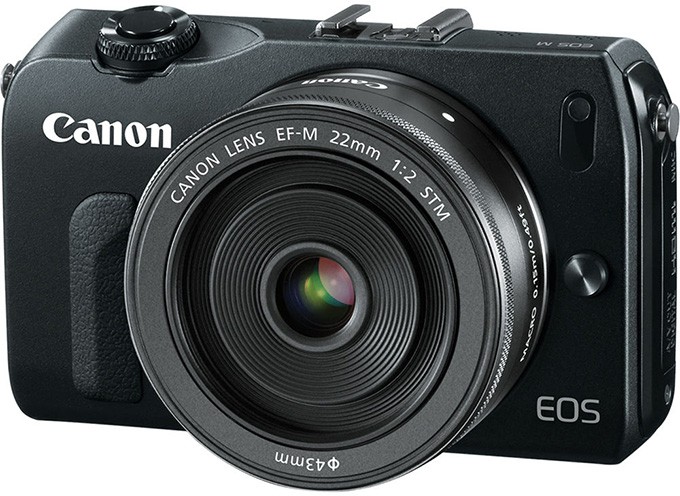

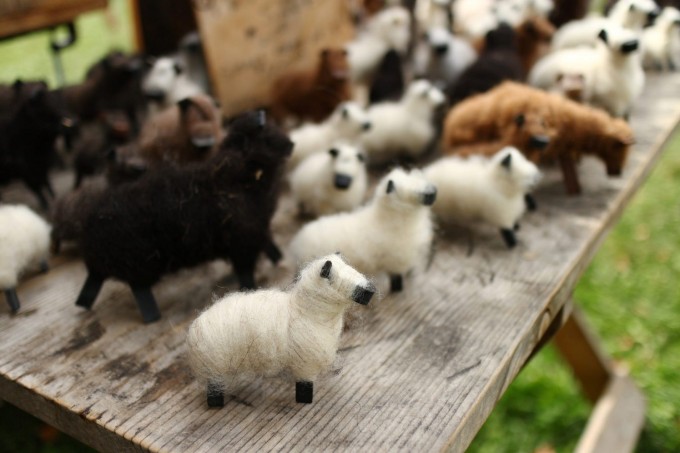

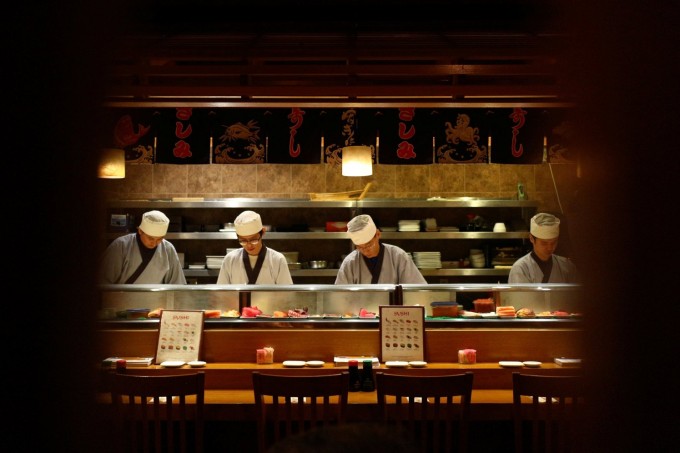
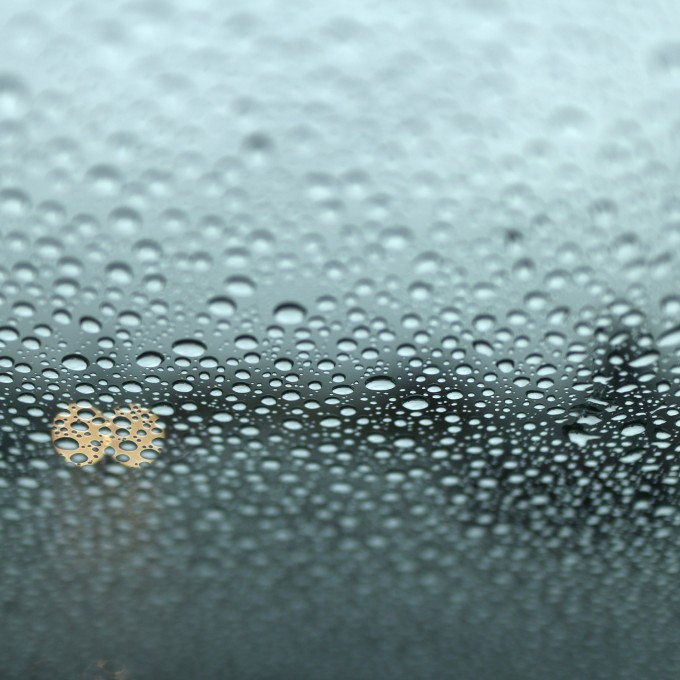


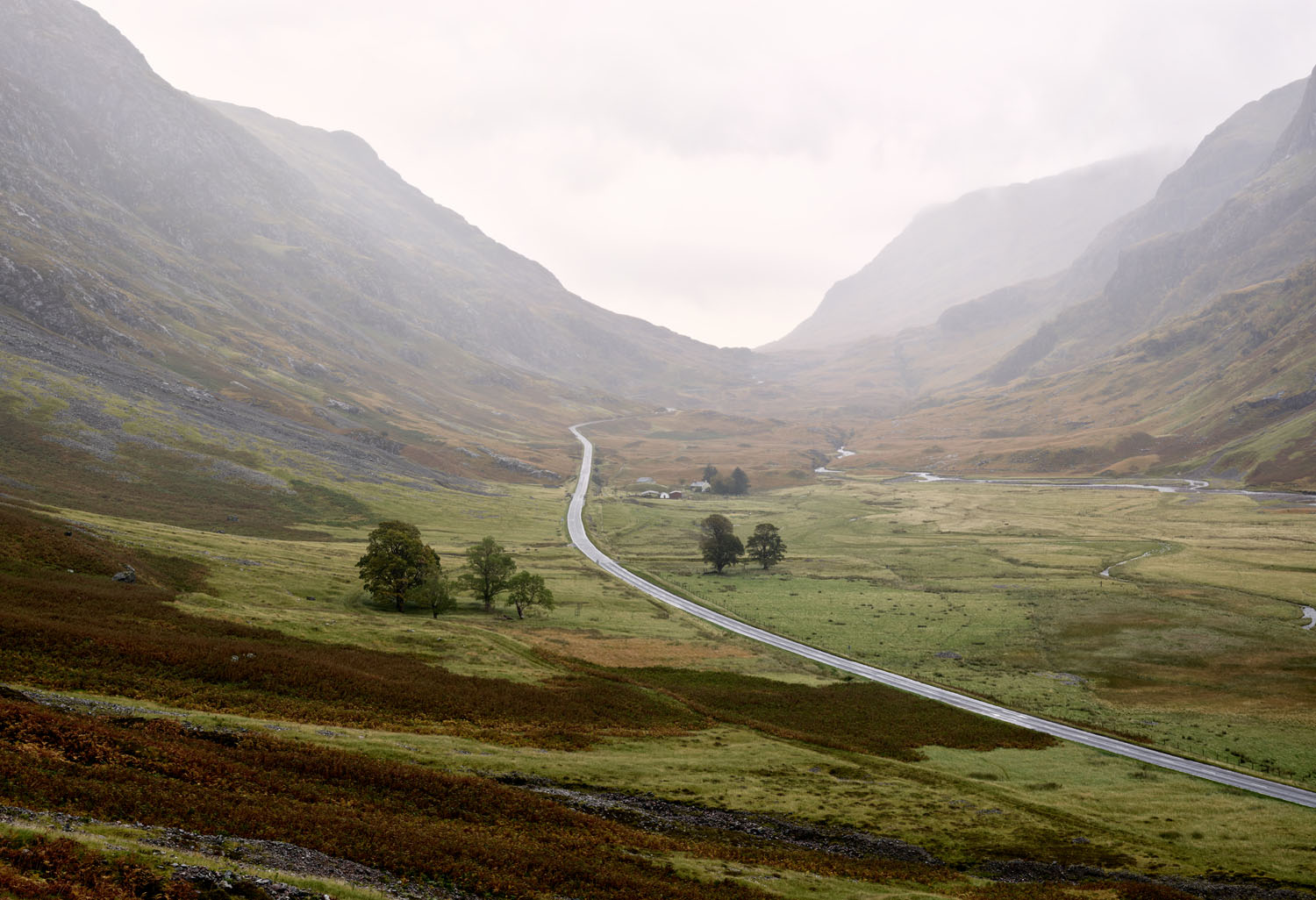
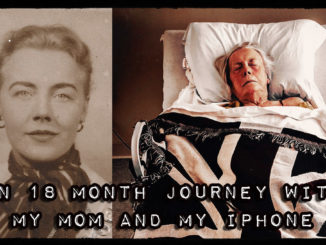

Thanks for your review – I appreciate how you figured out some unique strengths of the Canon EOS M rather than focusing (oops) on its weaknesses.
A neighbor is selling a kit with both lenses for $300 – seems like a pretty good deal.
Thanks for these thoughts. I’m going to try and pick up a good used one with 18-55 off ebay, mainly for a video project, but also to have a large sensor for reasonable low light images without flash. I’ve always liked Canon build quality and colour balance, going through IXIS V2, a G7 and last year bought a used SX280HS for £75 off ebay – a really capable little camera for so little money. There’s always something to be said for buying tech that isn’t the latest but has basic quality. I’ve long been tempted to try mirrorless and maybe now I can buy used and really enjoy it without worrying about whether it was worth the investment.
I love my EOS M, I sold my 650d/T2i and went with the M because of how portable it is. My camera is now always with me.
Please check out magic lantern as that opens up focus peaking and start trying out old manual lenses, theres an adaptor available for nearly every mount, the Russian Helios 44 is my fave at the moment. As for the black screen between shots, well I turn off image review and shoot in continuous mode, this also helps for action shots, I’ve shot motocross riders doing midair stunts and AF has kept up.
I own the EOS 5D MKIII and the EOS 7DMKII…BUT…my camera of choice…when out on visits to tourist spots with friends (You DON’T..want a lot of camera gear lugging about on those occasions) OR..when out on my Sunday cycle ride, has to be the lovely little Canon EOS M.
For general use, the 18-55 lens gives very good results, for compact travelling out on the bike, the 22mm and for Architecture and Landscapes, the SUPERB 11-22 EF-M.
The price asked for the entire kit, (EOS M, 18-55 lens, Flashgun), was £199 from Argos and that was a virtual giveaway.
My Lightroom 5 library has images take with the little EOS M which are nears a good as those taken with the 5D MKIII plus “L” glassware.
I see the EOS-M very much as a “cult” camera. Its flaws and quirks are many but it also has a unique, sometimes very compelling appeal.
The buffer delay is definitely the most frustrating thing for me. Unacceptable for the price they were initially asking, but tolerable in a $299 kit.
My Sony/Zeiss 24mm e-mount lens got sold and the EF-M 22mm remains because the whole camera fits in a belt holster, there’s much less monetary investment and sharpness and overall versatility is quite comparable.
Compared to the Sony/Zeiss, what the Canon pancake lens lacks in subtle character gets made up for with the sensor. Canon has that nice, inviting color recipe but I also find that the RAW files convert to B&W quite nicely. (Simply bumping up contrast & “clarity” with a Sony RAW capture doesn’t get the same look.)
I got the kit zoom this spring and enjoy it for what it is: versatile, convenient and compact with more than sufficient IQ much of the time.
Speaking of IQ, overall, I do seem to be printing a disproportionate ratio of EOS-M captures. When focus and exposure are nailed, something just “pops” and the results can be very satisfying indeed. I do hope Canon keeps developing this system & really puts it on the front burner eventually.
Not enough native lenses and lack of definitive support has to have people worried. After 2 years or so only having 4 native glass, 3 slow zooms and only one prime (the 22 is the highlight of the system) but building a system around one lens is a fail.
I bought the M2 from Japan and it solved a lot of the issues with the original (screen blackout, added wifi), but sold it after it letting me down in more ways than one.
Well, how good could it get (I did just a price check and – also checked my invoice – I already got that price in June ’15):
Original EOS-M, 22mm lens and adapter for CHF 299 (about roughly USD 310, incl tax).. You can mount all Canon EF glass. Definitely a nice back up for videographers.. ,-)
Got to check out that Magic Lantern software ,-)
While the EOS-M is cheap and with the right lens produces excellent image quality, there are a number of problems with it:
– lack of native lenses
– unclear if Canon will continue to support it
Hopefully the M3 is successful enough that Canon make more native lenses. Even if they don’t, I’m pretty happy with the quality of the native lenses so far. There are also third party lenses available with the native mount, so I may look into one of those in the future.
Again, I’m hopeful Canon will continue to support the system, now that they are releasing the M3 in the US. But we’ll see.
Jonathon
I arrived at the same conclusion as you did regarding the EOS M. It is the steal of the compact cameras out there. Better yet, if you get the 11-22 lens, it’s the only APS C compact auto focus camera that shoots wide angle at 17mm (35mm equivalent). The best travel camera by far.
Not even the legendary Sony Alpha 7R goes that wide in that small a package. It’s image quality is better than any compact (I think including the Leica X2) and as good as an EOS 60D because it is an EOS 60D in a tiny package.
Better yet, if you lose it or break it on the beaten track or whilst grabbing that moment, it is really inexpensive to replace.
The only problem is that it has not shoot without a lens function so i can mount third party lenses. Canon, please fix that issue.
Great review
Noel
You can shoot without a lens on both cameras. I use different fd primes and zoom lenses on the m and m3 with a cheap adapter.
Sorry what? Sony APS-C E-mount has 10-18mm and 2 12mm lenses available. The 10-18mm is AF and is 15mm equivalent. Samsung have the 12-24mm. Fuji have the 10-24mm. That means every APS-C mirrorless camera has an equivalent lens to the Canon.
Oh and my EOS-M’s (plural) do have the functionality to shoot without lens.
I think your post is a bit misinformed.
Hey, you copied the title I copied 🙂
Great minds think alike! 😉
It’s a much better camera than one would believe by reading the on line reviews. The magic lantern with focus peaking and zebras works well enough.
I now have the M3 and with the better grip, control dial, tilt screen and viewfinder it is an exceptional camera – the 22mm lens is superb. Focus is fast enough for stills and tracking focus is okay.
We are certainly spoiled- the autofocus on the first M is still loads faster than the Nikon F4! LOL
I have both the M and M3, I really don’t use the kit lenses but use an adapter and old prime lenses. I enjoyed the M after installing the Magic Lantern, I think it added enough items to make it a much better camera. I love the M3, its like night and day.
I have been running around with both the M3 and a Fuji X100s and honestly I don’t know why so many “experts” love that X100. The menu is a pain and sometimes focus is just as slow as the original M. The only thing that keeps me from selling my Fuji is the color quality (plus I bought it used for a good price). Shooting only with the X100s makes me feel handicapped not being able to change lenses. There is only so much focusing that can be done with my feet.
Is there any appreciable difference in the dimensions of the M3 compared to the original M?
The M3 is a little thicker because it has somewhat of finger grip and also because of the screen that can be moved up and down.
Thanks, that information will be helpful when contemplating an upgrade from the Gen 1.
Great review Jonathan! I’ve owned an EOS M for about three years now and it tends to be my go to camera for just walking around and for travel. i bought the camera as a lightweight alternative to hauling around a DSLR. However, with the EF mount adapter, it also doubles as a second body to my Canon DSLR system. I found that the autofocus was a tad slow when I first purchased the camera but was greatly improved when I downloaded and installed Canon’s firmware upgrade. I think that the EOS M has a got a bad rap. I find the camera more than adequate for the photography that I do and I don’t find that my photography is substantially much different than most of the stuff I see on line. I don’t understand the need for blindingly fast autofocus and processing speed unless one is specializing in sports or action photography. It seems to me that those who specialize in that style of shooting are going to use a high end DSLR body anyway. I’m looking forward to checking out the M3 when it becomes available in my neck of the woods.
I don’t think people who started with digital really know what slow is. For those of us who still shoot film with manual focus and wind camera, we know there’s more important think to worry about that how fast a camera focuses or saves to a card.
How is the battery life? Many of the used bodies seem to include three batteries. Is it that bad?
Battery life sux. On a day trip, I’ll use 3 or 4. I always have 7 in my camera bag. You never know when a day trip will turn into an overnighter.
Battery life is good enough to take over 1 hour of video straight. Replacement batteries are cheap, so I have 2 extras (3 total) that I can carry with me. As long as you charge the battery before going out, you can usually get a whole afternoon of shooting photos without changing the battery. The truth is, any camera that requires you to use the rear screen for composition and changing settings will have crappy battery life. Mirrorless cameras with and EVF do better, but they still can’t compete with DSLR’s, simply because DSLR’s can have bigger batteries and their rear LCD screens aren’t on all the time.
There are many things I agree upon and that correspond with my experience. I never got past about how sluggish the cam is. AF isn’t the worst, but these blackouts in between shots drove me nuts. Eventually, I sold the M. Buuuut, when it reappeared, as a very affordable package, M&22mm (which is a real gem)&adapter for – I don’t even remember, but it might have been something like 379 for the whole set, I bought it again.
There are some pro points, which one has to either discover or learn to appreciate: built quality is very solid, I like the way the straps attach, although there’s not much room for an alternative strap, image quality is excellent, using the interface with the touch screen is quite intuitive, after you got past missing wheels and buttons..
That said, those black outs can be an annoyance.
I think I did read about a Magic Lantern “hack” for the M – might be interesting for video. Didn’t read into it too deeply, just saw it on their page..
Thanks for the beautiful pictures, the honest review and for reminding me to grab that M* once again ,-)
***
*”That M”: I swapped my Canon 24-70 2.8 for a Leica M8 – and it is sluggish, too.. Guess “M” suits them both: you think, you shoot, then you eeeeeehmmmmm (=wait), then you think again and you shoot again, when both you and the cam are ready ,-)
I thinks it’s like the whole “better wine is more expensive” argument. The Leica’s just have to be better because they have so much value, never mind you can’t shoot sports with one. I just choose not to let the blackouts bother me and work on getting my timing better.
The Magic Lantern ‘hack’ works quite nicely for video – and it can be removed without leaving a trace, if you do not like it.
As for the M8, if you use it the way you would use an analogue Leica M, it is not slow. Just do not get hung up about the delays in displaying an image on the back display…
Guess I read something like you load it onto the SD card.. Might still try it – one day..
As for the M8: it is 10 years old, but I think an M9 isn’t much different, except full frame, I mean, if it comes to the shooting style. I really started to shoot cams like this, starting with the Fuji X100. It is not a bad style, but you have to get used to it.
I got my M4P in the early 1980ies – when you are used to work that camera either with an external exposure meter or the plug-on Leicameter, you will not find the M8 slow, but rather fast… indeed, it is a matter of style.
As for the Magic Lantirn – try it, it takes only an SD card and a few minutes to get started…
Actually, the M8 really is.. faster than the EOS M. I can go on shooting instantly, and I do not have to wait for the file to be written onto the card. So if I don’t want to see what I just shot, I can go on pretty quickly and fire the next frame, if I need to.
This is different on the EOS M: here, you really have to wait that second or so, when the camera does black out in between shots.. It really is like winding film a frame further.
I am playing with the EOS a bit right now. Being me, “might still try it – one day” has been two days ago. Loaded a working ML version onto the sd card, flashed the fw as said and now I am trying to figure out the settings. Some cool stuff in there. Only wish the menu wouldn’t go away every 5-10 seconds, so I would have more time to think about a menu item.. That double ISO eg really seems to do something. And I also like the crop overlays. Way more in there. Like bracketing and then use Enfusion.. Interesting and Fun. But I need some time to work with all that stuff.. ,-)
There is no way I would have EVER bought the EOS M for what they were asking at it’s initial release. That said, they are so cheap right now that I think they are a heck of a deal. You can buy an M with kit lens for less than a P&S and it has an APS-C sensor.
However, even at the low prices these things can be found at I still wouldn’t buy one. For me the EOS M has to be just about the most uninspiring camera I could imagine, and I know I wouldn’t use it. Some people don’t care about that sort of thing, but I do. I find I shoot way more when I am using gear that is a pleasure to use.
To each his own. I love gadgets too and I wouldn’t be shooting as much too if I didn’t have gear I enjoy using. That being said, shooting film reminds me there’s more to photography than gear. I get more pleasure capturing a well composed, perfectly timed photo than I do machine gunning with gear. Just my own personal experience.
Who said anything about ‘machine gunning with gear’?? I currently shoot an X-Pro1 and a Leica M, neither of which are particularly fast.
Plenty of people complain about the slowness of the camera, so I assumed they were talking about autofocus and speed of operation. Seems people want their cameras nowadays to be speedy enough to burst, hence my “machine gunning with gear” comment.
Before getting my 6D, I had thought about buying into the Fuji system. I was particularly looking at the XE-2, it seemed like a fairly good value and not too expensive to start with. But I decided to just stick with the Canon lenses I already had that were full frame compatible, and I was already familiar with how Canon bodies operated. Sure, I get bored with the 6D sometimes, but when I feel uninspired, I listen to a photography podcast, look at photography books, or pull out one of my film cameras. Again, I just personally try not to let my gear hold me back from being inspired.
Much to my surprise (under normal circumstances I _really_ dislike touch interfaces on cameras – and commend Sony for not implementing one on their higher end cameras) I found the EOS-M an eminently usable and in that aspect inspiring camera – just like the Leica T701 (which is, though, priced somewhat outside the market still)…
“A couple more iterations of the EOS M and they’ll not only catch up to the other mirrorless cameras, but they may even surpass them.”
You mean, one day a future 2018 EOS-M model will surpass a 2015 mirrorless camera from the other manufacturers? That’s eventually possible…
Canon has all the technology they need already, just look at their cinema line of cameras, their duel pixel technology, high ISO technology, and high megapixel technology. They just need to get over their fear of cannibalizing their DSLR sales.
Canon sensors still seriously lack dynamic range.
This is what made me leave the Canon DSLR world.
That said, our household has two EOS-Ms, two 18..55 IS and one 22 f/2… one used exclusively for video, with third party firmware, and the other one, with the latest Canon firmware, and usually with the 22 f/2 on, and a push-on 35mm OVF, is used as companion during hikes and field trips by family members when the going is expected to go tough.
The acquisition price was almost ridiculously low (NIB with kit zoom and flash ± 200 Euro each, the 22 f/2 NIB ±150 Euro) – and for that money one gets a lot of camera for the money – the low ISO IQ in decent light is very, very good, so is the video quality, the camera and lenses are light and _very_ robust instead, and as noted in Jonathan’s report, if one embraces the user interface rather than be annoyed by it, the camera is eminently usable – and the AF is not that bad after the firmware update…
Highly recommended as superior alternative over point&shoots in a similar price bracket, and over most low-priced MFT (u4/3) cameras…
mb-de, thanks for your real world feedback. Yes, the Canon sensors are criticized for lack of dynamic range and I would be lying if I said I wasn’t jealous of other cameras with greater dynamic range. But in the end, do I really need another stop or 2 of dynamic range? Will it make my photos better? Not really. I’m still learning to use the dynamic range I already have, which is more than good enough for the photos I want to take.
The two stops on the APS-C NEX7 have saved my neck (read my pictures) a few times, when conditions were at the limit. The even higher reserve on recent Sony FF sensors (field-proven for me in A99, RX1, A7R, Nikon D800E, D810) often allow to recover images after significant user (exposure measurement) error – in one case I took pictures with external studio flash with accidentally switched on Auto ISO, and had images exposed to the right by 2 stops, recovering them – much to my surprise – without loss even in the highlights, whilst another photographer had highlight issues on the 5D Mk III even with correctly exposed images…
Very interesting notes on the video it’s an option I did not consider. Your shot at mirrorless owners of other brands was a little obnoxious considering you can build a very respectable mirrorless system for the same cost as just the Cannon 6D and an RX100 you mentioned you own. It reads to me as though you bought the camera for video and have been pleasantly surprised by the stills.
You can read my reviews on this site for the Canon 6D and RX100 for the reasons I got those cameras. As for my “obnoxious” comments, sorry you took it that way. Guess I just get tired of all the DSLR bashing from mirrorless folks, had to give a little back to bring balance to the force.
Nice images and review Jonathan.
Even for someone who is just looking for a small walk-around camera (and not necessarily an interchangeable lens camera… something along the lines of the Fuji X100) the small, sharp, 22mm f2.0 lens makes the EOS M a worthy contender for those who enjoy the 35mm field-of-view!
Thanks for writing about your thoughts on the EOS M.
Had it not been for the “M” appearing online at a $300+ price point, I would still be shooting with under $300 point and shoots.
The M was immediately comfortable as it has a similar form factor to my old P&S’s It remains my “go to” camera for daily use. Worn, scratched and beaten up, it performs as well as it did that first day after purchase.
I’ve taken thousands of photos with this Canon.
I never worry about taking it on the most strenuous hikes and rappels. Capturing landscapes in the local State and National Parks.
My first successful star shots were taken with it’s “kit” 22mm pancake lens.
Second hand EF/EFS lenses are inexpensive and usable on my M with a cheap Canon adapter.
I even once rented a 70-200 2.8 which dwarfed the little M!
The downside? In the past 2 years, since my purchase, I’ve spent thousands on lessons and gear. Including an OMD E5.
I will always have a soft spot, for my first “M”. https://goo.gl/9Km8C8